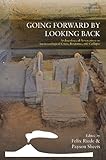Going Forward by Looking Back : Archaeological Perspectives on Socio-Ecological Crisis, Response, and Collapse / ed. by Felix Riede, Payson Sheets.
Material type: TextSeries: Catastrophes in Context ; 3Publisher: New York ; Oxford : Berghahn Books, [2020]Copyright date: ©2020Description: 1 online resource (458 p.)Content type:
TextSeries: Catastrophes in Context ; 3Publisher: New York ; Oxford : Berghahn Books, [2020]Copyright date: ©2020Description: 1 online resource (458 p.)Content type: - 9781789208658
- Archaeology and natural disasters -- Case studies
- Climatic changes -- Social aspects -- Case studies
- Disaster relief -- Social aspects -- Case studies
- Disasters -- Social aspects -- Case studies
- Emergency management -- Social aspects -- Case studies
- Environmental archaeology -- Case studies
- Hazard mitigation -- Social aspects -- Case studies
- Human ecology -- History -- Case studies
- SOCIAL SCIENCE / Archaeology
- 363.34 23/eng/20230216
- online - DeGruyter
| Item type | Current library | Call number | URL | Status | Notes | Barcode | |
|---|---|---|---|---|---|---|---|
 eBook
eBook
|
Biblioteca "Angelicum" Pont. Univ. S.Tommaso d'Aquino Nuvola online | online - DeGruyter (Browse shelf(Opens below)) | Online access | Not for loan (Accesso limitato) | Accesso per gli utenti autorizzati / Access for authorized users | (dgr)9781789208658 |
Frontmatter -- Contents -- Illustrations, Figures, and Tables -- Introduction. Framing Catastrophes Archaeologically -- Section I. Fire -- Introduction -- Chapter 1. Do Deep-Time Disasters Hold Lessons for Contemporary Understandings of Resilience and Vulnerability? The Case of the Laacher See Volcanic Eruption -- Chapter 2. Risky Business and the Future of the Past: Nuclear Power in the Ring of Fire -- Chapter 3. Do Disasters Always Enhance Inequality? -- Chapter 4. Political Participation and Social Resilience to the 536/540 CE Atmospheric Catastrophe -- Chapter 5. Collapse, Resilience, and Adaptation: An Archaeological Perspective on Continuity and Change in Hazardous Environments -- Chapter 6. Continuity in the Face of a Slowly Unfolding Catastrophe: The Persistence of Icelandic Settlement Despite Large-Scale Soil Erosion -- Chapter 7. Coping through Connectedness: A Network-Based Modeling Approach Using Radiocarbon Data from the Kuril Islands of Northeast Asia -- Section II. Water -- Introduction -- Chapter 8. The Materiality of Heritage Post-disaster: Negotiating Urban Politics, People, and Place through Collaborative Archaeology -- Chapter 9. Mound-Building and the Politics of Disaster Debris -- Chapter 10. Catastrophe and Collapse in the Late Pre-Hispanic Andes: Responding for Half a Millennium to Political Fragmentation and Climate Stress -- Chapter 11. Beyond One-Shot Hypotheses: Explaining Three Increasingly Large Collapses in the Northern Pueblo Southwest -- Chapter 12. Inherent Collapse? Social Dynamics and External Forcing in Early Neolithic and Modern Southwest Germany -- Chapter 13. El Niño as Catastrophe on the Peruvian Coast -- Chapter 14. A Slow Catastrophe: Anthropocene Futures and Cape Town’s “Day Zero” -- Conclusion. Rewriting the Disaster Narrative, an Archaeological Imagination -- Index
restricted access online access with authorization star
http://purl.org/coar/access_right/c_16ec
Catastrophes are on the rise due to climate change, as is their toll in terms of lives and livelihoods as world populations rise and people settle into hazardous places. While disaster response and management are traditionally seen as the domain of the natural and technical sciences, awareness of the importance and role of cultural adaptation is essential. This book catalogues a wide and diverse range of case studies of such disasters and human responses. This serves as inspiration for building culturally sensitive adaptations to present and future calamities, to mitigate their impact, and facilitate recoveries.
Mode of access: Internet via World Wide Web.
In English.
Description based on online resource; title from PDF title page (publisher's Web site, viewed 25. Jun 2024)


